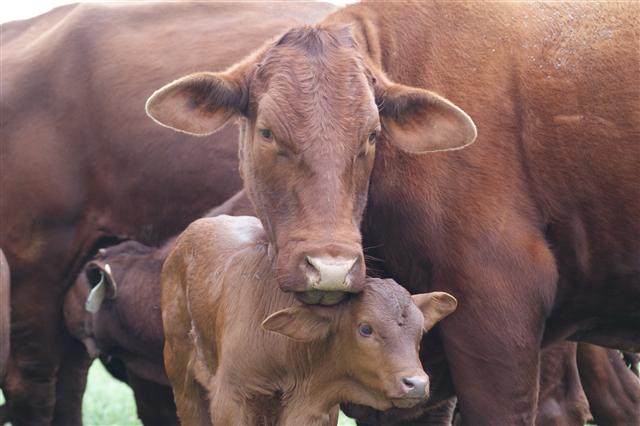
Agricultural News
OSU's Derrell Peel Advises Short Run Adjustments to Changing Cattle Market Conditions
Mon, 14 May 2012 16:06:29 CDT

In this week's Cow/Calf Newsletter, Oklahoma State University Extension Livestock Extenstion Marketing Specialist Derrell Peel, examines making optimal decisions for maximizing profits in fluctuating market conditions.
Economic principles provide guidance on how cattle producers should adjust production in response to wildly fluctuating output and input values. Most production decisions are issues of allocating resources and revolve around the following questions: What to produce? How much to produce? How to produce it? Though the question of what to produce and the general production system that determines how to produce may be largely fixed in the short run, changing market values for outputs and inputs mean that adjustments are necessary to maximize profits.
Taking the decision about what to produce as a given in the short run, the question of how much to produce depends on the value of the output. Most production processes are subject to diminishing returns, which mean that at some point additional inputs will result in less additional output than before. This means, for example, that cow-calf producers need to determine the optimal weaning weight of calves (or better yet, the optimal number of pounds of calf produced per cow exposed to bulls), which may not be the same as the maximum level of production. An obvious example is using creep feed to increase weaning weight. The question is whether the additional pounds are worth more than the cost of the creep feed. The same is true for genetics, nutrition, and health inputs. This principle also implies than when the value of the output increases, the optimal level of production also increases, all else being equal, and vice versa for decreased output value.
A similar principle applies to the use of inputs. Changes in the value (cost) of inputs imply changes in the optimal level of use of the input. For a given output value, input use should increase if input cost decreases and decrease if input cost increases. Following the earlier example, an increase in the cost of creep feed means that less creep feed should be used to maximize profits. In another example, higher fertilizer costs suggest less fertilizer use is optimal for a given forage value. Thus, higher fertilizer prices may mean using less total fertilizer and targeting use to those areas with the highest marginal productivity. The optimal level of input use is the point at which the value of additional output produced equals the cost of the additional input.
The final important economic principle is substitution of inputs when relative values change. As noted above, the production system may be fixed in the short run but there is usually some degree of flexibility to choose among various inputs. A common livestock example is choosing among alternative feed ingredients in a ration. Obviously, when one feed gets more expensive, it makes other feeds more attractive. As with the output and input decisions, it is relative values that matter. If one has a choice of two inputs and both double in price, then the optimal choice between them does not change but the optimal level of use of either one is reduced according to the previous discussion.
Each of the economic principles was stated in the context of "all else being equal" but, of course, all else is not equal. The question of optimal level of production and input use are more complicated when both input and output values are changing at the same time. This is the biggest challenge in today's market environment. Higher output prices suggest increased production but higher input costs suggest lower input use (and thus production) so the net decision is not obvious. Volatile input and output values mean that questions of optimal production are subject to frequent changes. You have to figure out what is optimal and then refigure it frequently as market condition change. One thing is clear; just because it used to work or you have always done something a certain way doesn't mean a thing in today's volatile markets.
Finally, this discussion started with the idea that the question of what to produce and the general production system used for production may be fixed in the short run. However, if changes in relative input or output values are permanent or very long term in nature, these questions should be revisited as those answers may change as well in the long run. In the cattle industry, questions of what, how much and how to produce are subject to short run adjustments and long run changes in cow-calf, stocker and feedlot sectors as we experience short run fluctuations and possibly long term changes in relative input and output values.
WebReadyTM Powered by WireReady® NSI
Top Agricultural News
More Headlines...



















